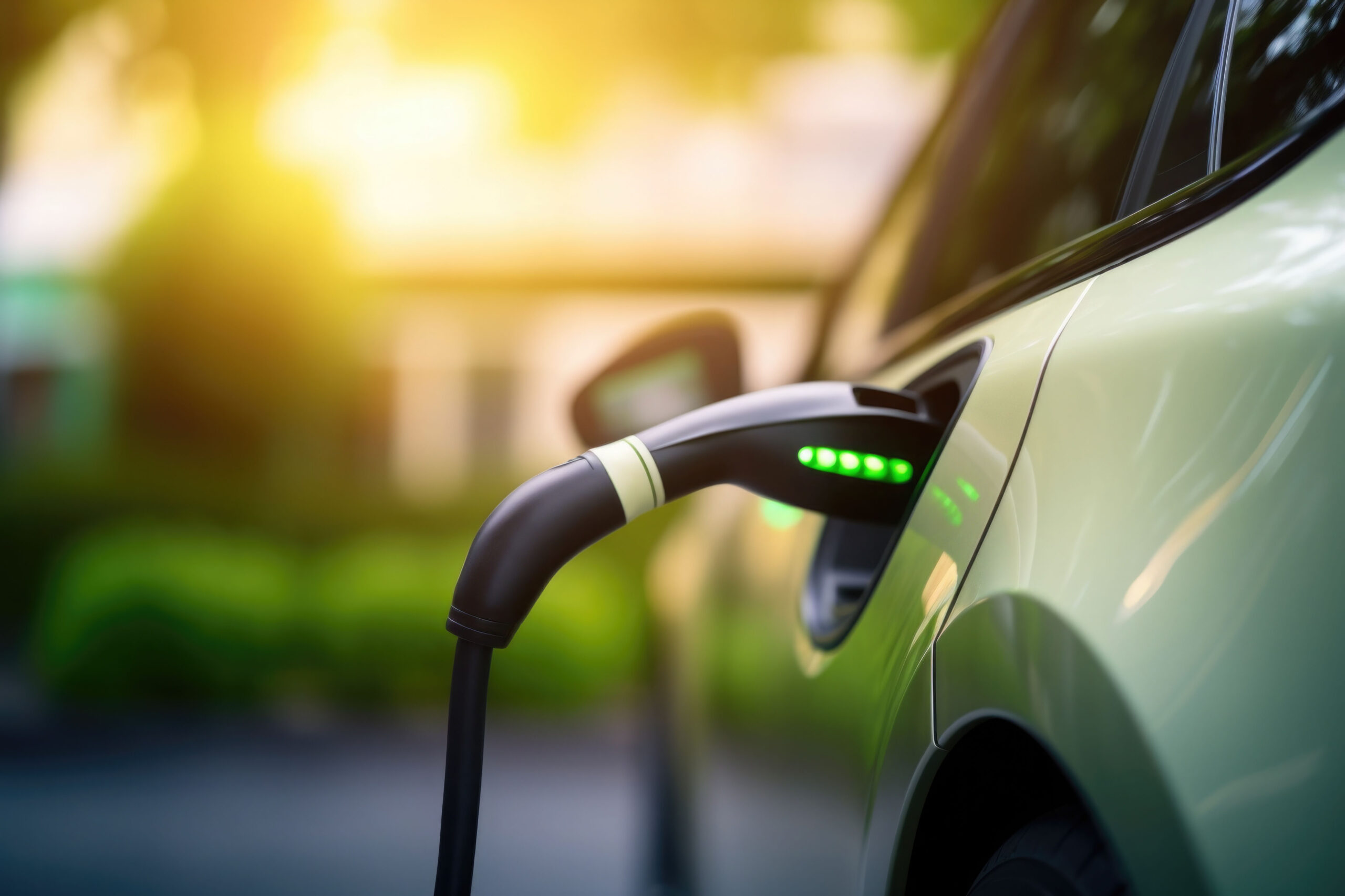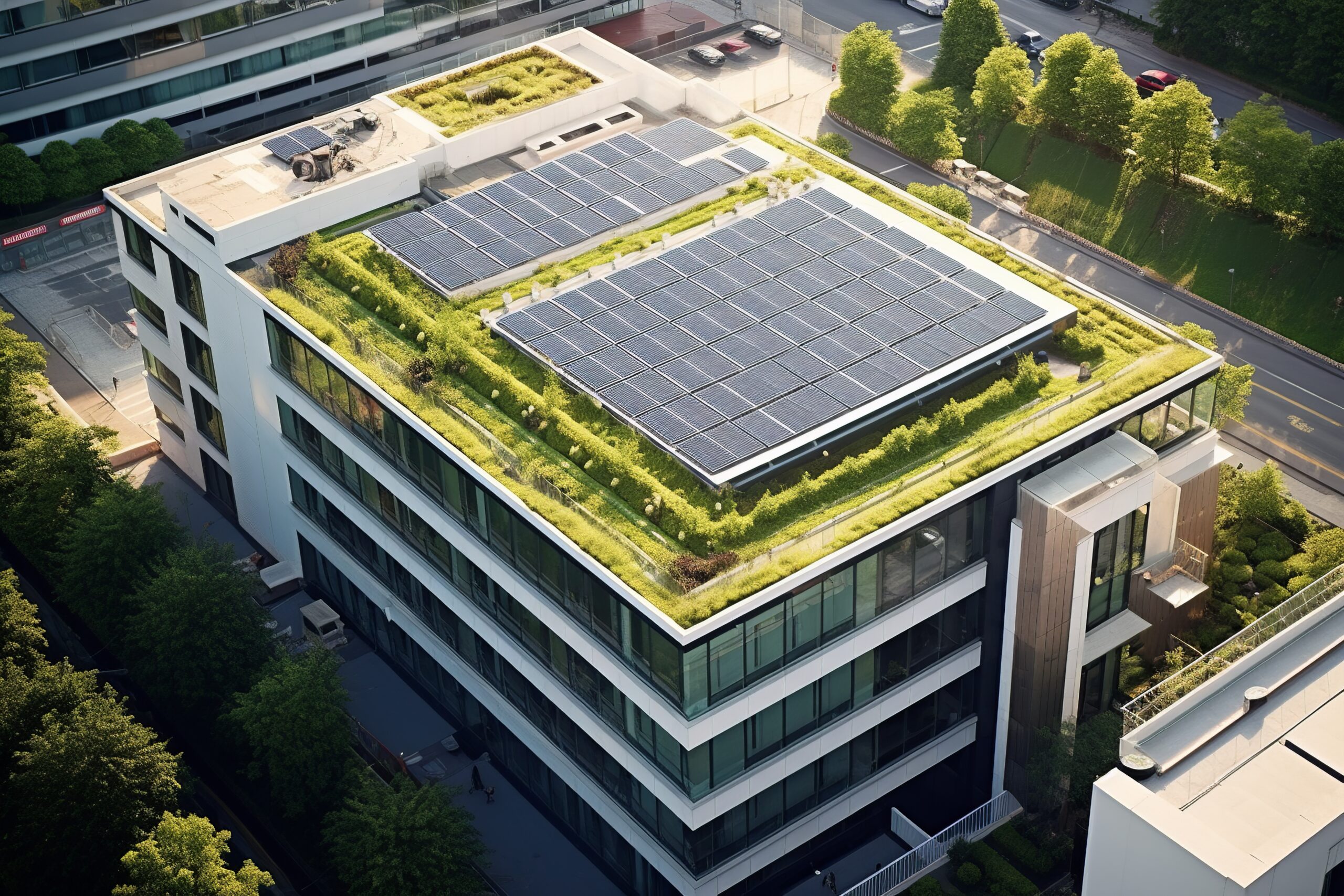
The role of the electricity industry in the energy transition
On the road to carbon neutrality[1], France is facing two major challenges linked to the energy transition: On the one hand, reducing energy consumption by more than 40%, and on the other hand, phasing out dependency on fossil fuels by 2050.
Dominated by nuclear production (70%), the French energy mix in 2020 consisted of 24% renewable energy (13% hydraulic and 7.9% wind) and slightly more than 1% fossil (oil and natural gas). With such low quantities of power generated from fossil fuels, France is one of the European countries with the lowest CO2 emissions.
Nevertheless, to meet these targets set, the share of electricity in final energy consumption must be increased from 25% today to 55% by 2050[2].
To provide the keys for understanding and the levers for action needed for the energy transition, stakeholders in the industry are continuing to deploy innovative solutions.
Electrification of buildings to reduce energy consumption
The electricity industry has an essential role to play in achieving national targets. But what tools does it have to directly influence the energy consumption of infrastructures?
As the second largest greenhouse gas emitter, the building industry accounts for 27% of total CO2 emissions and 45% of the final energy consumption in France[3].
The development of energy renovation technologies is an opportunity for stakeholders in the electricity industry to use more efficient monitoring systems. Such innovating technologies are for instance able to project a building’s electricity consumption prior to its construction.
Innovations, such as those developed by the French company Lowit, are making the most of electricity. With its digital building twins (virtual real-time representations of infrastructures and their associated systems), Lowit can produce a personalized audit of one or more buildings[4]. In addition to influencing the construction decision-making process, this solution makes it possible to carry out different consumption reduction scenarios. A tool that, according to the company, has already enabled communities of 50,000 residents to vote on significant multi-year budgets to make a long-term commitment to the energy transition.
Electrification for sustainable mobility
Between the development of electric vehicles and intelligent infrastructures, the electricity industry is continuing to transform urban spaces to meet today’s economic and environmental challenges. Here is an overview on progress made in transport electrification.
- Road transportation
Between 2020 and 2021, electric vehicles sales have grown by 108% globally, increasing from 2 to 4.2 million units. This market is projected to reach 7 million units sold[5] this year (+70% vs. 2021), confirming the craze for electric cars.
In this context, a number of professionals in the sector are focusing on the massive deployment of charging stations to encourage the switch to electric. For example, Freshmile, an electric vehicle charging station operator acquired by Rexel in March 2021, offers access to 150,000 roaming charging points across Europe[6] and manages about 20% of the publicly accessible charging stations in France. Freshmile is a leader in electric mobility services, and the power and accessibility of its network of charging stations enable it to offer sustainable solutions to both its professional and private customers.
Although there are regular criticisms of the often fossil fuel origin of the electricity consumed by electric vehicles, the share of renewable energies (hydroelectric power plants, photovoltaic panels, and wind turbines) in the energy mix is gaining ground[7].
- River transportation
More and more projects are emerging to decarbonize river transport. The French company Vedettes du Pont Neuf has joined forces with TotalEnergies to convert its riverboats in Paris into fully electric ones[8]. Equipped with two 55 kW electric motors and two 30.5 kWh batteries, the boat, named Rocca, will be the first of its kind to sail on the Seine, powered by green electricity. Vedettes du Pont Neuf plans to modernize 50% of its fleet by 2024 in a circular economy approach, which will involve reusing steel hulls.
- Aeronautical transportation
Manufacturers are also working on the electrification of the aeronautical industry[9]. This includes R&D efforts focusing on new technologies, such as regional hybrid electric aircrafts, flying taxis, and service drones. The Nancy airport in the Eastern region of France has introduced a unique 100% electric aircraft[10]. With a flying time of one hour and ten minutes, the battery can be fully charged at a cost of between one and two euros, compared to the around fifty euros of petrol usually needed for an ULM[11] (Ultra-Light Motorized aircraft) with a combustion engine. The only drawback which might prevent it from being widely deployed is its purchase price, estimated at 200,000 euros.
The era of electricity 4.0?
Driven by the desire to reduce the use of hydrocarbons, the electricity industry should benefit from the development of hydrogen as a way of decarbonizing France’s economy. This clean and harmless gas is a promising energy vector. Although hydrogen[12] is not the miracle solution for definitively decarbonizing France given the existing technological obstacles, it can still make a serious contribution. While 95% of the hydrogen produced today worldwide is made using fossil fuels, it is possible to produce it without emitting any CO2, thanks to the electrolysis of water[13] (chemical decomposition of certain substances under the effect of an electric current) and decarbonized electricity.
Hydrogen produced from the chemical process known as electrolysis emits only 1.6kg of CO2 per kg of energy produced (compared to 11kg of CO2 for 1kg of hydrogen extracted from fossil hydrocarbons), and 2.8kg if using electricity from the current French electricity mix (low-carbon hydrogen in this case)[14]. The first results of these tests are promising, but still require some effort to be competitive, such as the adaptation or replacement of existing downstream equipment and the creation of infrastructures dedicated to the integration of hydrogen into current natural gas networks[15].
Hydrogen has become a strategic challenge for achieving carbon neutrality by 2050 and could eventually be used to stabilize energy networks. It could also contribute to the flexibility of the electrical system since this gas can be stored[16]. In this effect, when production is higher than consumption, it becomes necessary to be able to store the surplus of hydrogen from renewable sources[17].
In addition to providing immediate solutions to environmental and economic issues, the deployment of efficient technologies for the production of low-carbon electricity also meets a number of societal needs: Soft mobility, improved air and light quality, or even noise control.
[1] Declaration-commune-La-Filiere-electrique-un-accelerateur-de-la-decarbonation.pdf (fieec.fr)
[2] The electricity sector: helping to accelerate the energy transition – French Electricity Union (ufe-electricite.fr)
[3] https://www.ecologie.gouv.fr/renovation-energetique
[4] Tertiary law: Lyon-company Lowit uses AI to “massify” building energy audits (latribune.fr)
[5]https://www.caradisiac.com/un-marche-de-l-electrique-a-7-millions-de-voitures-en-2022-70-195078.htm
[6]https://www.freshmile.com/en/home/
[7] https://get-moba.com/electricite-recharge-ve/
[8] Un projet d’électrification des bateaux à passagers pour naviguer sur la Seine – Environnement Magazine (environnement-magazine.fr)
[9] Pour une industrie aéronautique durable et profitable au service de la mobilité et de l’emploi ! (latribune.fr)
[10] https://www.francebleu.fr/infos/transports/en-images-un-avion-electrique-teste-a-l-aeropole-de-nancy-1651677935
[11] https://en.wikipedia.org/wiki/Ultralight_aviation
[12] https://blog.rexel.com/en/a-world-of-energy/hydrogen-the-fuel-of-the-future/
[13] https://www.futura-sciences.com/sciences/definitions/physique-electrolyse-339/
[14] https://infos.ademe.fr/magazine-avril-2021/dossier/quest-ce-que-lhydrogene-decarbone-exactement/#:~:text=L%27%C3%A9lectrolyse%20%3A%20vers%20un%20hydrog%C3%A8ne%20plus%20vert&text=En%20l%27occurrence%2C%20celle%20de,aide%20d%27un%20courant%20%C3%A9lectrique
[15]https://www.accenture.com/fr-fr/insights/utilities/green-gas-hydrogen
[16] https://www.futura-sciences.com/planete/actualites/terre-hydrogene-star-transition-energetique-97897/
[17] https://www.terega.fr/en/hydrogen-storage-a-challenge-for-the-development-of-the-industry

